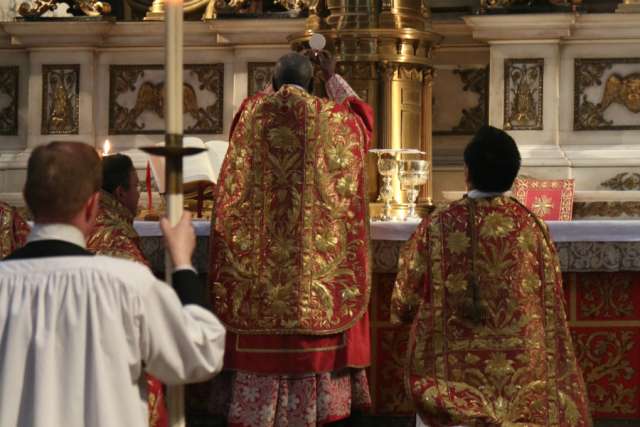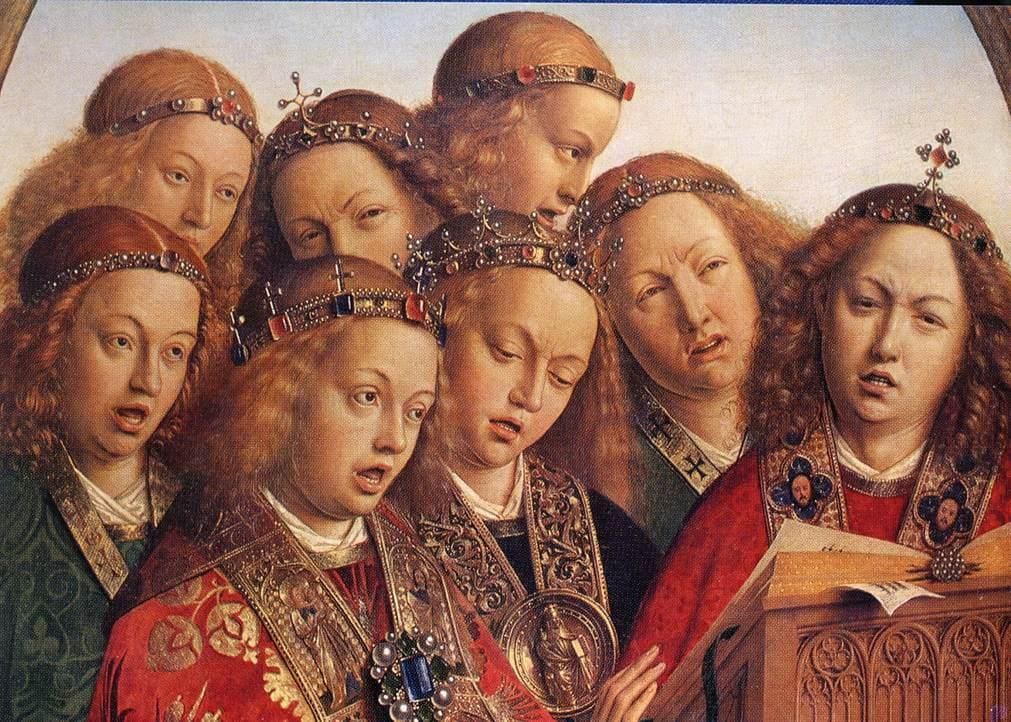With a decrease in the number of Catholics in the Diocese of Pittsburgh from 914,000 to 632,000 over the past 35 years, a 40 percent decline in Sunday Mass attendance—less than 100,000 attend on a given weekend—, and a projected decline in priests, Diocese of Pittsburgh Bishop David Zubik sees the solution, in part, as a liturgical one. “The No. 1 priority has to be, ‘We need to make our worship better,’” he says in an Aug. 17 report in the Pittsburgh Tribune-Review.
“Make our worship better.” Here Bishop Zubik gets to the heart of the matter. How many today—bishops, priests, laity—think of liturgy as secondary or tertiary in importance among the Church’s priorities, a ceremonial nicety not nearly as essential as the real work of the life of faith.
On the contrary, the Church responds, the faithful’s participation in the sacred liturgy “is the primary and indispensable source from which the faithful are to derive the true Christian spirit; and therefore pastors of souls must zealously strive to achieve it” (Sacrosanctum Concilium 14). Or, as U.S. Bishops once forcefully put it: “Faith grows when it is well expressed in celebration. Good celebrations foster and nourish faith. Poor celebrations weaken and destroy faith” (“Music in Catholic Worship” 6). Make a better celebration of the liturgy: make the faith stronger.
But what does “better” mean—and who is the final arbiter of what is good, better and best in liturgy? Indeed, opinions differ: but do opinions matter? On the one hand, the “good-better-best” evaluation of the liturgy is an objective one, transcending an individual’s personal opinion. The liturgy, objectively speaking and in itself, worships God—this is good! And the criteria of such an evaluation is the Church’s, found most recently in her Constitution on the Sacred Liturgy, understood and implemented according to her long liturgical tradition. St. John Paul II, in fact, called the Church and her members to “examine their liturgical consciences” in the full light of the principles put forth by the Second Vatican Council and its Constitution on the Sacred Liturgy (see Tertio Millennio Adveniente and Spiritus et Sponsa).
On the other hand, the private opinions and preferences of the individual are entirely significant—not because these are what shape the liturgy, but because these are to be shaped by the liturgy. While the liturgy is about the glory of God, “the glory of God,” as St. Irenaeus says, “is man fully alive.” The opinions of what shape a “better” liturgy takes in the Diocese of Pittsburgh, then, must account for the 632,000 Pittsburgh Catholics, for their sanctification is God’s glorification. Medicine is most efficacious when it accounts for the condition of the patient.
Cardinal Robert Sarah’s recent address to the Sacra Liturgia UK contributes much to the desire to “make worship better,” in its worship of God and transformation of his people. While any casual liturgical observer is aware that in this address the Cardinal repeated his call to pray ad orientem at certain parts of the Mass, too few are aware of his broader message. Only a few paragraphs of his 9000 word paper dealt with ad orientem, while the great majority considered the essence of the liturgy, the intention—as found in the texts of Sacrosanctum Concilium—of the Council Fathers, an “examination of conscience” concerning the Constitution’s implementation (an examination, as we noted above, which John Paul II insisted that all faithful undertake), and a look ahead to how the Council’s liturgical principles might be better implemented.
The title of Cardinal Sarah’s talk was “Toward an Authentic Implementation of Sacrosanctum Concilium.” The Cardinal recalls how Popes Pius X, XI, and XII explained the liturgy, culminating in the Council’s Sacrosanctum Concilium, because “if we do not understand the nature of the Catholic liturgy…we cannot hope to understand the Second Vatican Council’s Constitution on the Sacred Liturgy, or to move toward a more faithful implementation of it.”
He then considers a fundamental question: “What did the Fathers of the Second Vatican Council Intend?” It should seem an obvious starting point for anyone interested in liturgical studies or liturgical prayer or “making liturgy better.” But is it? In the Council’s very first paragraph of its very first document, it states its aims. Who can name these? How many are there? Has the reformed and restored liturgy met these goals? (See Cardinal Sarah’s text, below, in case you yourself need a refresher!)
But in addition to reiterating the Council’s principle goals by which all liturgy is deemed good, better, or best (or bad, worse, and worst), Cardinal Sarah bases most of his talk on Pope Francis’ desire for “renewed willingness” to engage in “a solid and organic liturgical initiation and formation, both of lay faithful as well as clergy and consecrated persons” (Message to participants in the Symposium “Sacrosanctum Concilium. Gratitude and Commitment for a Great Ecclesial Movement,” February 18, 2014).
The importance of “liturgical formation” occurs at a dozen places in Cardinal Sarah’s talk, and it can be said, in the end, to be the central theme of his message. For an “authentic implementation of Sacrosanctum Concilium” is not possible unless, in the words of the Constitution itself, “pastors themselves, in the first place, become thoroughly imbued with the spirit and power of the liturgy, and undertake to give instruction about it” (14).
Like the Cardinal’s question to us about familiarity with the Council’s intentions, a second important inquiry asks: Who can claim to be thoroughly imbued with the spirit and power of the liturgy? Is it my bishop? My pastor? Myself? Are Bishop Zubik and the pastoral leadership of the Diocese of Pittsburgh—or, for that matter, any other diocese—so imbued and formed?
It’s for these reasons—acquaintance with the Council’s stated goals, liturgical and otherwise, and with a Magisterial understanding of the shape that liturgical formation must take—that Cardinal Sarah’s text is worth reading (excerpts are below, while the entire text is available at www.adoremus.org): especially for anyone interested in “making liturgy better.”
For the same reasons, be sure to read the present Bulletin’s other entries. Long-time contributor to Adoremus, Susan Benofy, marks the 50 year anniversary of Musicam Sacram, which gave the Church the Council’s first, definitive application of the Constitution’s principles on sacred music. Anyone wishing to “make music better” must be acquainted with its still-current direction. Father Randy Stice offers the second of his two-part exposition of the Order of Celebrating Matrimony. Making the celebration of matrimony better means appreciating the liturgy’s signs and symbols, which the Second Edition, in its language and rites, allows us to do in a better way. Additionally, Roland Millare reviews a “Spirited” new book by David Fagerberg, Consecrating the World: On Mundane Liturgical Theology, which will imbue any reader with the Spirit and Power of the liturgy.
“Make liturgy better.” To that end, as the Council Fathers say, let us continue to become “thoroughly imbued with the spirit and power of the liturgy, and undertake to give instruction about it.” This describes the mission of Adoremus exactly.

